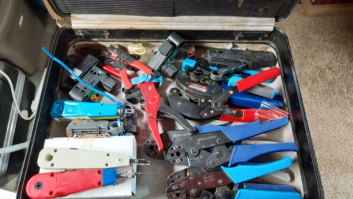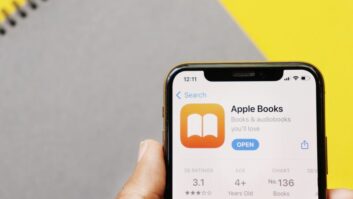
Fig. 1: Made inexpensively out of PVC pipe, this tool facilitates checking buried copper radials. Well, there’s no fooling Workbench readers!
The mystery tool pictured in the June 8column was identified almost simultaneously by three readers. Congratulations to Mark Peterson, an engineer with WCTS(AM), in Plymouth, Minn.; Tom Holmes, market chief engineer for Cumulus Media’s Columbia/Jefferson city cluster in Missouri; and Wayne Smith, director of engineering for Cox Media Group in Tulsa, Okla.
Yes, Fig. 1 is a handy device that Tom Van Gorkom of Radio Esperanza put together, under the direction of veteran Consulting Engineer Jack Sellmeyer. The handle screws into the bottom of an AM field intensity meter. It allows you to carry the meter upside down easily, and by swinging it from side to side, you can “see” the meter peak as you pass over a buried ground radial. Remember, there is current flowing in these radials.
This little trick works well, though I never thought of a handle, I just bent over and held the meter close to the ground, watching the needle to indicate as you pass over a radial. Jack’s device saves your back, especially if you are identifying a lot of radials, as at multi-tower directional AM arrays.
The buried ground system is so important in AM systems; and the field meter is a great way to see if any radials are cut or missing.
***
Michael Patton, principal with Michael Patton & Associates, has some great news for owners of the Harris SX-1, -2.5 or -5 kW transmitter.

Fig. 2: The MP&A SX Retrofit Display Card solves many of the metering problems of the SX transmitter. Although a popular transmitter in the 1980s, its Achilles heel was the premature failure of the digital alpha-numeric LED displays used for diagnostics. The problem presents itself as missing LED segments, so one wonders if the reading is a 0, an 8 or some other number — frustrating when you are trying to troubleshoot the transmitter. Replacement display chips are essentially unobtainable.
To make matters worse, there are no pilot lights. These displays are the only window into the inside workings of the transmitter. If the display isn’t working, you can’t get a clear picture of the transmitter’s operation, much less repair it.
Given the large number of SX transmitters sold by Harris, Patton and his staff embarked on an aggressive retrofit project.
The MP&A SX Retrofit Display is a color LCD board using a modern micro-controller. The retrofit board not only eliminates the problems of the original LED board, it brings enhanced functionality and reliability. Burn-in on the LCD display is eliminated, with the display automatically turning off after several minutes. The Retrofit board monitors two parameters, and either can be changed to monitor something else. The new display also lists the selected channel name in plain text, so there’s no need to cross-reference codes from the table in the manual. In addition, the retrofit board displays the selected channel’s name in plain text, along with the normal reading for that channel.
Installation is simple; the retrofit board mounts onto the old display’s mounting studs, plugging into the board’s ribbon cable. The old keyboard can be reused, or if you need a replacement, MP&A has those too.
The MP&A SX Retrofit Display board is now shipping. Get more information by emailing [email protected] or call (225) 752-4189.
***
Brian Urban is a coordinator with the Television Studio Lab at Austin Community College. A while back, we mentioned putting white dots on USB connectors to ensure proper alignment, especially among non-technical folks who may unwittingly force the plug into the jack.
Should the connector be mounted upside down, an easier identifier is to mark both the equipment and the USB plug. This ensures proper plug alignment, regardless of the socket orientation.
Brian says this is not really a new idea; camera lenses have been marked this way for years.
You probably have plenty of good ideas of your own.Contribute to Workbench! You’ll help fellow engineers and qualify for SBE recertification credit. Send tips to [email protected]. Fax to (603) 472-4944.
John Bisset has spent 46 years in the broadcasting industry and is still learning. He handles West Coast sales for the Telos Alliance. He is SBE certified and a past recipient of the SBE’s Educator of the Year Award.












